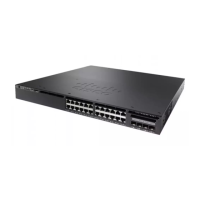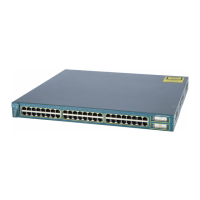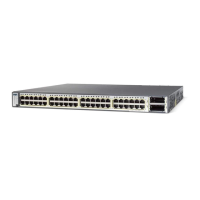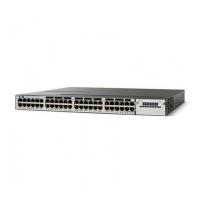PurposeCommand or Action
•
(Optional) For source-wildcard, enter the wildcard bits in dotted decimal
notation to be applied to the source. Place ones in the bit positions that
you want to ignore.
The access list is always terminated by an implicit deny statement for
everything.
Specifies the interface to be configured, and enters interface configuration
mode.
interface interface-id
Example:
Device(config)# interface
Step 4
The specified interface must be one of the following:
• A routed port—A physical port that has been configured as a Layer 3
port by entering the no switchport interface configuration command.
gigabitethernet 1/0/1
You will also need to enable IP PIM sparse-dense-mode on the interface,
and join the interface as a statically connected member to an IGMP
static group. For a configuration example, see Example: Interface
Configuration as a Routed Port, on page 83
• An SVI—A VLAN interface created by using the interface vlan vlan-id
global configuration command. You will also need to enable IP PIM
sparse-dense-mode on the VLAN, join the VLAN as a statically
connected member to an IGMP static group, and then enable IGMP
snooping on the VLAN, the IGMP static group, and physical interface.
For a configuration example, see Example: Interface Configuration as
an SVI, on page 83
These interfaces must have IP addresses assigned to them.
Configures the boundary, specifying the access list you created in Step 2.ip multicast boundary
access-list-number
Step 5
Example:
Device(config-if)# ip multicast
boundary 12
Returns to privileged EXEC mode.end
Step 6
Example:
Device(config-if)# end
Verifies your entries.show running-config
Step 7
Example:
Device# show running-config
(Optional) Saves your entries in the configuration file.copy running-config startup-config
Step 8
IP Multicast Routing Configuration Guide, Cisco IOS XE Release 3SE (Catalyst 3650 Switches)
140 OL-29890-01
Configuring PIM
Configuring PIMv2 BSR

